
Fig.1
Mary Beale 1633‒1699
Sketch of the Artist’s Son, Bartholomew Beale, in Profile c.1660
Oil on paper, after treatment
325 x 245 mm
T13245

Fig.2
Mary Beale 1633‒1699
Sketch of the Artist’s Son, Bartholomew Beale, Facing Left
c.1660
Oil on paper, after treatment
325 x 245 mm
T13246
The two oil sketches on paper (figs.1‒2) are the same size and show different views of the artist’s eldest son, whose year of birth in 1656 provides the likely date.
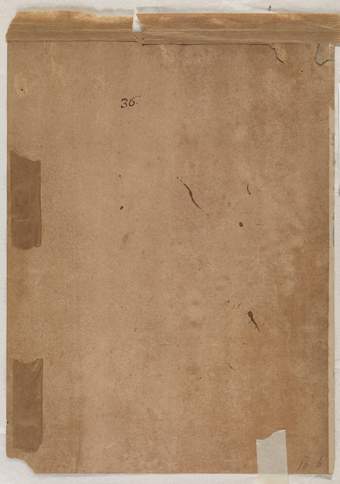
Fig.3
Verso of the sketch in profile, before treatment

Fig.4
Verso of the sketch facing left, before treatment
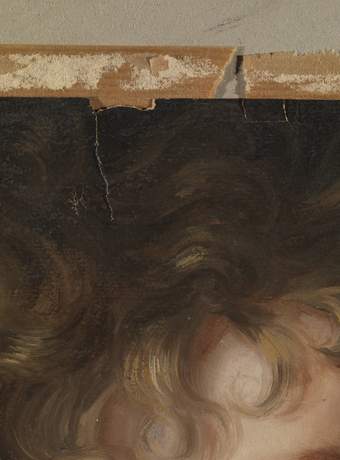
Fig.5
Top edge of the sketch in profile, showing a tear before treatment
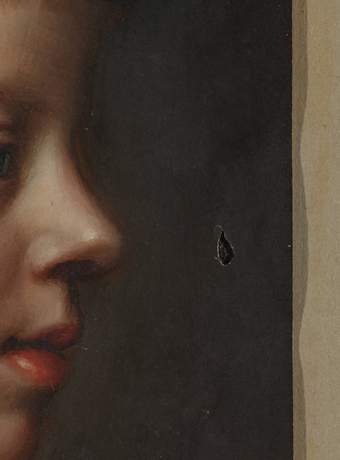
Fig.6
Right edge of the sketch in profile, showing a loss in the paper
The sketch in profile has been lined onto a thin card support: it has a long association with this sketch, even if it is not original. There are areas of brown paper tape on the versos (figs 3) that are relatively recent additions and which could be removed. The sketch facing left has also been lined onto paper, but that is in better condition (fig.4) and does not require any treatment. Both sketches have been treated at Tate to decrease the visual impact of deformations, small tears running inwards along the top edge of the head in profile (fig.5) and to support the particularly vulnerable areas, by the application of small bridging strips of thin toned Japanese tissue to the tears affecting the head facing left and fractures in the support of the portrait facing left (fig.6). The misaligned tear edges were carefully manipulated to give as good a join as possible. Small areas of paint loss along the tear lines were inpainted, while more substantial areas of loss were infilled and then inpainted. The old repairs evident in places had been relatively unsuccessful; some were fairly straightforward to replace though others are stable and also could not be removed safely. Each portrait was framed in bespoke wooden frames in a style contemporaneous to the objects, with low-reflecting glass fitted.1
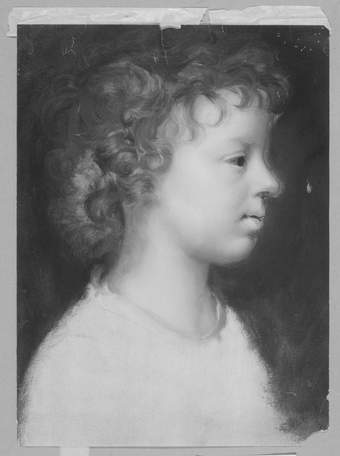
Fig.7
Infrared image of the sketch in profile
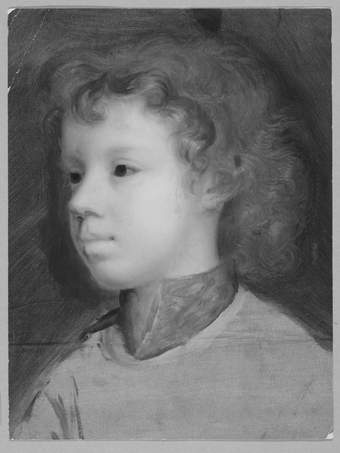
Fig.8
Infrared image of the sketch facing left
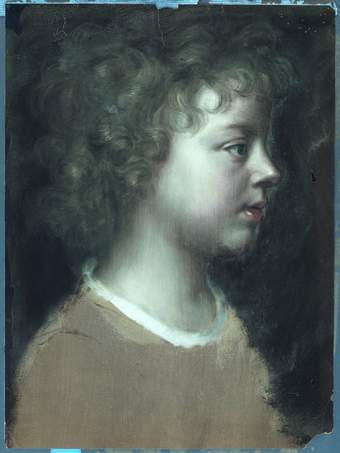
Fig.9
Image in ultraviolet light of the sketch in profile, before treatment
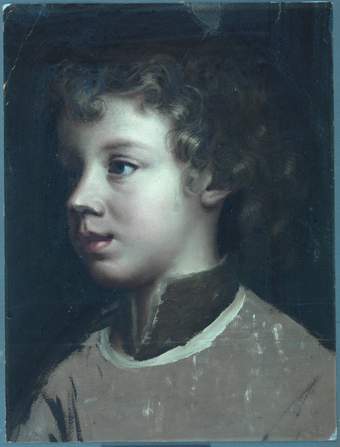
Fig.10
Image in ultraviolet light of the sketch looking left, before treatment
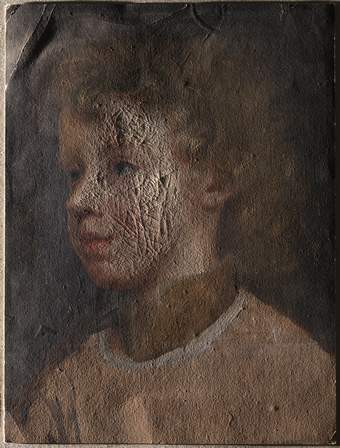
Fig.11
The sketch looking left, viewed in raking light from the left, before treatment
The infrared images (figs.7‒8) indicate that the profiles and necks were draw lightly but confidently in a hard medium with a broad drawing point, with tiny refinements made to the profile. The eyes, eyebrows and mouth needed no such refinement. The curls were directly painted rather than drawn in outline, the shirts scarcely modelled or outlined at all. The artist painted a thin oil wash prior to painting the main body of the image in a thicker layer of paint. The faces are the most highly finished areas, the sketch facing left having been developed further, and the additional applications of thin paint worked wet in these areas are responsible for the increased ultraviolet (UV) fluorescence here (figs.9‒10) and for the localised ageing cracks that can be seen in raking light on the sketch looking to the left (fig.11).
In certain areas there is another thin ‘veil’ of paint which has the appearance at first glance of efflorescence, but which upon analysis seems to be a thin wash of greyish paint including bone black and lead white over the top of a thicker layer of flesh-coloured paint, intended to render pale and delicate skin in full light.2 The analysis of a sample of varnish over brown paint in the background suggests that vandyke brown and chalk are present as well as lead white. Surface appearance and the images in ultraviolet light suggest the use of yellow and brown ochres in pure oil paint thinned with turpentine but without any medium modifiers or driers, for the costume and for the soft curls. The oil paint has caused excessive embrittlement of the entire paper support, though the survival of the sketches and the lack of oil staining on the verso where the paint is thickest suggests that a preparatory sizing layer must have been used.
The varnish on both sketches is of natural resin type and likely similar in both: its very minor degree of yellowing suggests it was applied relatively recently, and certainly not by the artist.
March 2022
